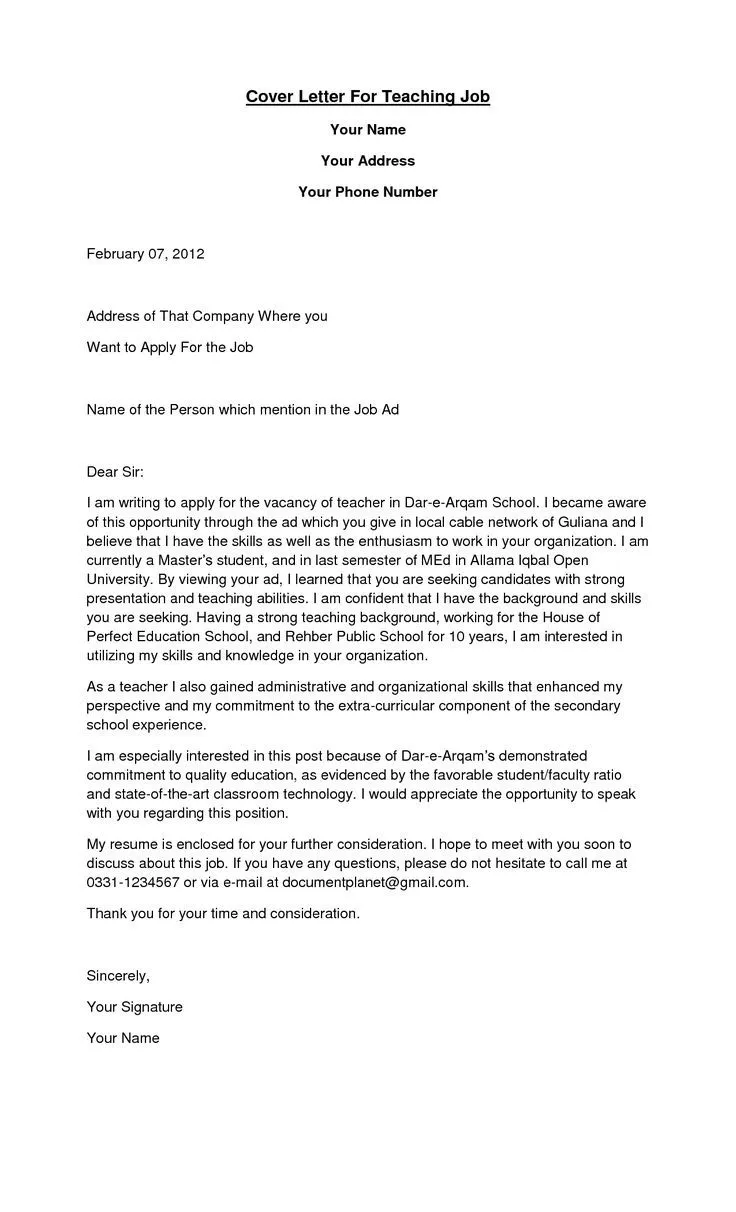Why a Great Teaching Cover Letter Matters
In the competitive world of education, a compelling cover letter can be the key to unlocking your dream teaching job. It’s often the first impression you make on a potential employer, providing an opportunity to showcase your personality, passion, and unique qualifications. Unlike a resume, which provides a factual overview of your experience, a cover letter allows you to tell a story, connecting your skills and experiences to the specific needs of the school or district. A well-crafted cover letter demonstrates your genuine interest in the position and your understanding of what the school is looking for in a teacher. It can significantly increase your chances of securing an interview, setting you apart from other applicants and paving the way for a successful career in education. A strong cover letter can be the differentiator between a job offer and rejection. It serves as your personal introduction and a marketing tool to highlight your key strengths.
Key Components of a Powerful Cover Letter
To create a cover letter that grabs attention, it’s essential to understand its key components. A strong cover letter begins with a professional header containing your contact information, followed by the date and the recipient’s details. The opening paragraph should immediately capture the reader’s interest, clearly stating the position you’re applying for and expressing your enthusiasm. The main body of the letter should highlight your relevant teaching skills and experience, providing specific examples of your achievements and the positive impact you’ve made in previous roles. It’s crucial to tailor your letter to the specific school and position, demonstrating your understanding of their mission and values. The closing paragraph should express your interest, reiterate your qualifications, and include a call to action, such as stating your availability for an interview. Careful proofreading is essential to ensure your letter is free of errors and reflects your professionalism.
Header Section Details
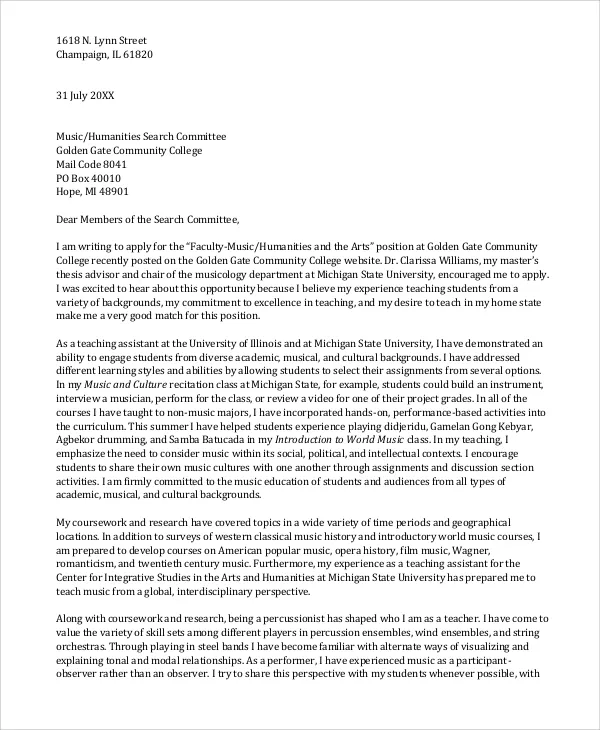
The header of your teaching cover letter sets the tone for professionalism and provides essential contact information. Begin with your full name, followed by your phone number and email address. Ensure your email address is professional; avoid using nicknames or unprofessional language. It’s also important to include your LinkedIn profile URL, if you have one, to provide the hiring manager with additional information about your professional background. Your address can be included as well, though it’s not always necessary. The header should be clean, well-formatted, and easy to read. Make sure to use a professional font and appropriate spacing. This section ensures the recipient can easily contact you and gives a positive first impression of your attention to detail.
Contact Information
Your contact information is a vital component of your cover letter. It ensures that the recipient can easily get in touch with you. As previously mentioned, include your full name, phone number, professional email address, and optionally, your mailing address. Double-check all information for accuracy, and make sure your voicemail is set up and ready to accept messages. A clear and easily accessible contact section demonstrates your professionalism and eagerness for the position. Ensure your email address is appropriate for professional correspondence, and consider creating a dedicated email address for job applications. The inclusion of a LinkedIn profile link is a great addition, allowing potential employers to learn more about your qualifications and experiences.
Date
The date is a simple but essential element of your teaching cover letter. Place the current date directly below the header, usually aligned to the left or right. This helps the hiring manager know when the letter was written and can be useful for future reference. The date should be formatted consistently with your other documents and follow standard conventions (e.g., Month Day, Year). A properly dated cover letter indicates timeliness and attention to detail, demonstrating your professionalism from the start. It is also a key element in keeping track of your application materials and is an important part of maintaining organization throughout the application process.
Recipient Details
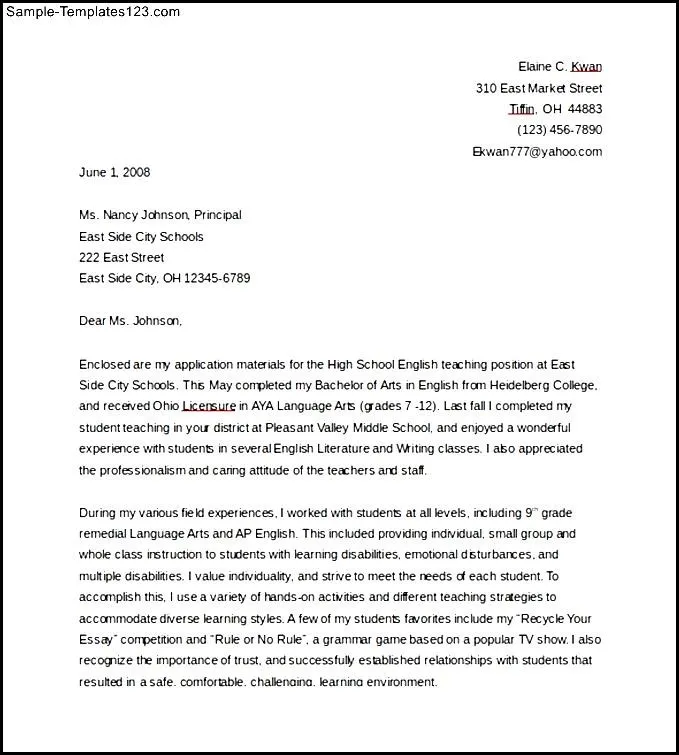
Addressing your cover letter to the correct person is crucial. If possible, find the name of the hiring manager or principal of the school. Addressing the letter to a specific person shows that you’ve taken the time to research the school and are genuinely interested in the position. Using a name personalizes the letter and makes it more engaging. If you cannot find a specific name, use a generic title such as “Hiring Committee” or “Principal,” avoid generic greetings like “To Whom It May Concern.” Look at the school website, call the school, or check LinkedIn to find the correct contact person. Personalization makes a great first impression and can significantly increase the chance of your application being noticed.
The Opening Paragraph Grabbing Attention
The opening paragraph of your cover letter is your first chance to make a strong impression. It should immediately grab the reader’s attention and clearly state the position you’re applying for. Start with a confident and enthusiastic statement about your interest in the teaching position and the school. Briefly mention what attracted you to the opportunity, whether it’s the school’s mission, its innovative programs, or its reputation in the community. Avoid generic opening lines, such as “I am writing to express my interest.” Instead, try to infuse personality and passion. State the specific position you are applying for. This helps the hiring manager quickly understand the purpose of your letter. Your opening paragraph should be concise, engaging, and demonstrate your genuine excitement about the role.
Highlighting Your Teaching Skills and Experience
The main body of your cover letter should focus on your teaching skills and experience. Provide specific examples that demonstrate your abilities and achievements. Mention your experience with different teaching methodologies, classroom management techniques, and curriculum development. Use action verbs to describe your accomplishments. For example, instead of writing “I assisted students,” write “I implemented differentiated instruction, resulting in a 15% increase in student test scores.” Highlight any special skills or qualifications you have that align with the school’s needs. Quantify your achievements whenever possible to demonstrate the impact you made in previous roles. By showcasing your skills and experience with concrete examples, you create a compelling case for your candidacy and make a lasting impression.
Showcasing Achievements and Results
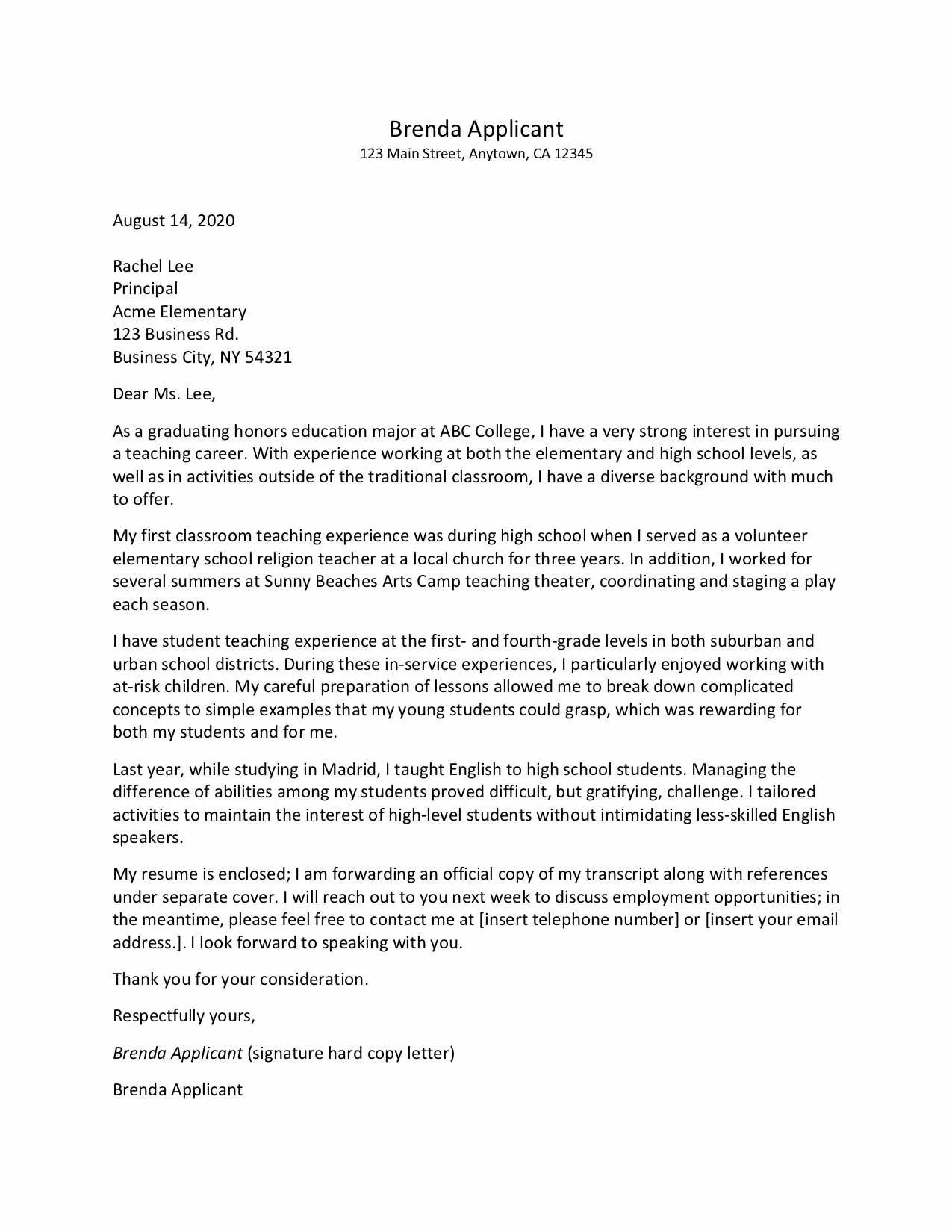
Instead of simply listing your responsibilities, showcase your achievements and the results you’ve obtained in your previous teaching roles. Provide specific examples of how you have positively impacted student learning, improved classroom environments, or contributed to school initiatives. Mention any awards, recognitions, or positive feedback you have received. Quantify your accomplishments whenever possible. For example, you can state that you “increased student engagement by 20% using interactive teaching methods” or “reduced disciplinary incidents by 30% through effective classroom management.” Use the STAR method (Situation, Task, Action, Result) to structure your examples, clearly outlining the situation, the task you faced, the actions you took, and the positive results you achieved. Highlighting your achievements demonstrates your value as a teacher and proves you are effective and results-oriented.
Quantifiable Achievements
Quantifiable achievements are crucial for making your cover letter stand out. Instead of making general statements about your skills, use numbers and data to demonstrate your impact and effectiveness. For example, state that you “improved student test scores by X%,” “increased parent involvement by Y%,” or “reduced absenteeism by Z%.” Include any awards, recognitions, or positive feedback you have received, and if possible, show how your actions have improved student outcomes, classroom dynamics, or school-wide initiatives. Using numbers adds credibility and shows that you are a results-oriented teacher. Make sure the data you provide is accurate and relevant to the position you are applying for. Quantifying your achievements provides concrete evidence of your abilities and differentiates your application from others.
Tailoring Your Letter to the School
One of the most critical aspects of a successful cover letter is tailoring it to the specific school and position. Generic cover letters rarely impress hiring managers. Research the school’s mission, values, programs, and initiatives. Demonstrate your understanding of their specific needs and explain how your skills and experience align with their goals. Highlight any relevant experience or qualifications that match the school’s requirements. Show that you are genuinely interested in the school by mentioning specific aspects that appeal to you. Tailoring your letter shows you have taken the time to learn about the school and are eager to contribute to its success. It demonstrates your interest and increases your chances of getting noticed, ensuring your cover letter is relevant and memorable.
Researching the School’s Mission and Values
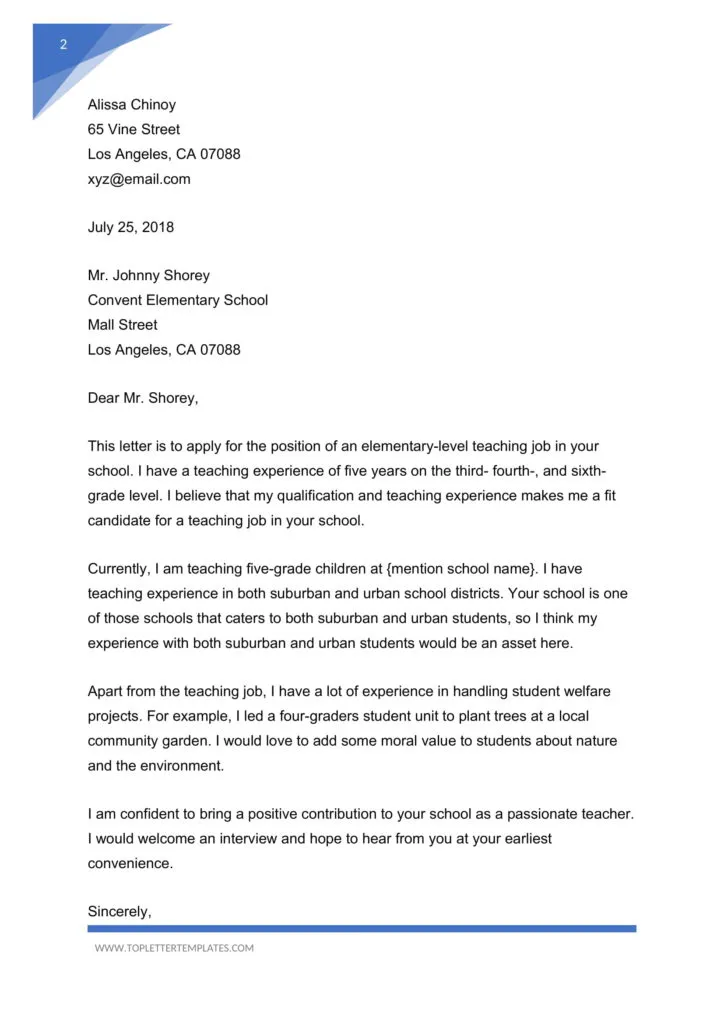
Before writing your cover letter, thoroughly research the school’s mission, values, and educational philosophy. This information can usually be found on the school’s website, in its strategic plans, or in community publications. Identify the school’s core values, such as innovation, collaboration, or community involvement. Understand its approach to education, whether it emphasizes project-based learning, differentiated instruction, or social-emotional learning. Use this information to tailor your cover letter, demonstrating that your teaching philosophy and approach align with the school’s values. Mention specific programs or initiatives that resonate with you. By demonstrating that you understand the school’s mission and values, you show your commitment to contributing to its success. This research is essential in creating a personalized and impactful cover letter that showcases your suitability for the role and reflects your genuine interest in the school.
Demonstrating Alignment
Once you have researched the school’s mission and values, you must demonstrate how your skills, experience, and teaching philosophy align with them. Provide specific examples of how you have demonstrated the school’s values in your previous roles. Show how your teaching practices support their educational goals. If the school emphasizes collaboration, describe your experience working with other teachers, parents, and the community. If it values innovation, highlight your use of creative teaching methods or technology integration. If the school focuses on student well-being, share how you have created a supportive and inclusive classroom environment. By demonstrating alignment, you prove that you are a good fit for the school’s culture and are committed to its success. Your ability to articulate this connection makes you a strong candidate and increases your chances of securing an interview.
Addressing Potential Concerns
In some cases, you may need to address potential concerns or gaps in your experience in your cover letter. If you are a recent graduate with limited experience, highlight your student teaching, internships, or volunteer work. Emphasize your enthusiasm, willingness to learn, and relevant skills. If you are changing careers, explain why you are passionate about teaching and how your previous experience can be applied to education. If you have a gap in your employment history, briefly explain the reason and highlight any skills or experiences you gained during that time. Be honest and transparent while focusing on your strengths and how you can contribute to the school. Addressing any potential concerns proactively demonstrates your professionalism and allows you to frame them in a positive light.
The Closing Section Encouraging Action
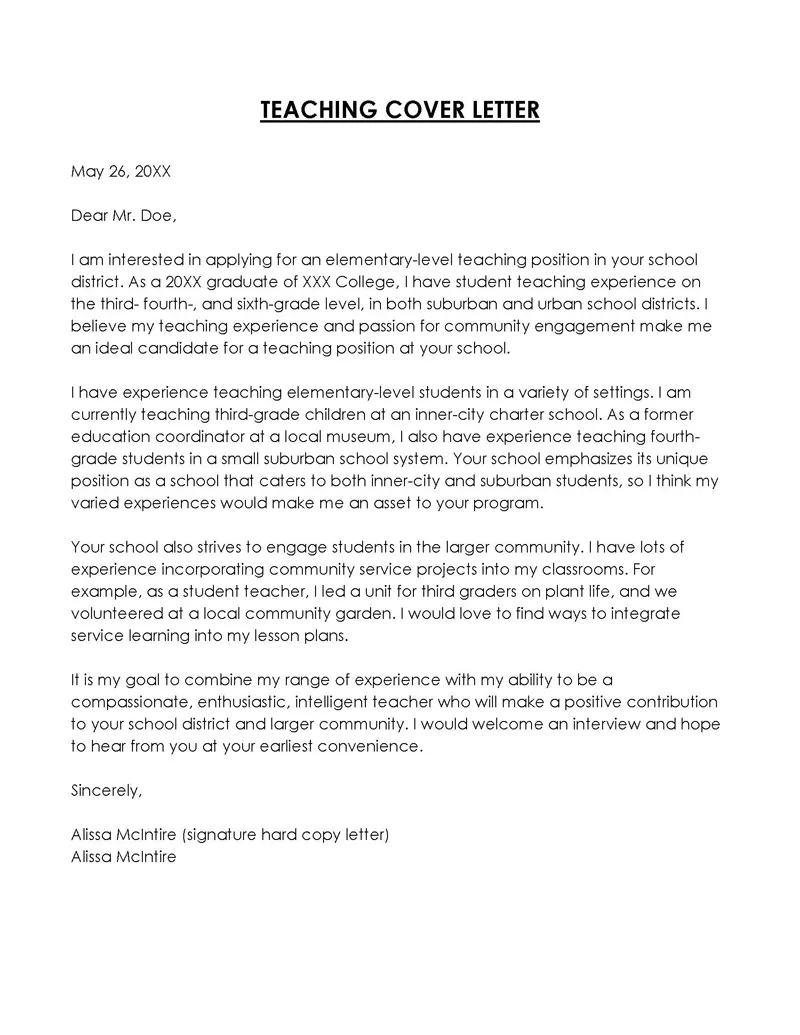
The closing paragraph is your final opportunity to make a strong impression and encourage the reader to take action. Express your enthusiasm for the position and reiterate your interest in the school. Summarize your key qualifications and reiterate your commitment to contributing to the school’s success. Include a clear call to action, such as stating your availability for an interview and how you can be reached (phone or email). Thank the hiring manager for their time and consideration. Keep the tone positive, professional, and enthusiastic. A well-crafted closing paragraph leaves a lasting impression and increases the likelihood of you being called for an interview, which is the ultimate goal of your cover letter.
Expressing Enthusiasm and Availability
In the closing paragraph, it is crucial to express your enthusiasm for the position and reiterate your genuine interest in the school. Reiterate your key qualifications and emphasize how your skills and experience align with the school’s mission and values. Clearly state your availability for an interview and how you can be reached (phone or email). Be specific with your availability, such as indicating your willingness to meet at their convenience. Thank the hiring manager for their time and consideration, expressing your gratitude for the opportunity. The closing should be professional, positive, and enthusiastic, leaving a lasting impression and prompting the reader to take the next step. Your enthusiasm and proactive approach can significantly enhance your chances of getting an interview.
Proofreading and Polishing Your Cover Letter
Before submitting your cover letter, carefully proofread and polish it to ensure it is free of any errors. Check for grammatical errors, spelling mistakes, and punctuation errors. Read the letter aloud to catch any awkward phrasing or unclear sentences. Ensure the formatting is consistent and professional. Ask a friend, colleague, or career counselor to review your letter for feedback. A polished cover letter demonstrates your attention to detail and professionalism. Make sure your tone is professional, enthusiastic, and aligned with the school’s culture. Ensure the letter is well-organized, easy to read, and tailored to the specific position and school. Proofreading is a critical step in creating a strong cover letter that will impress the hiring manager and increase your chances of getting an interview.
